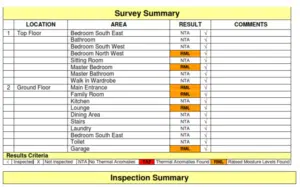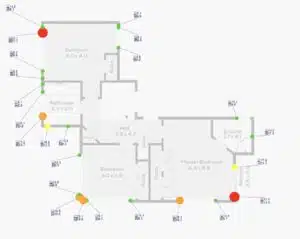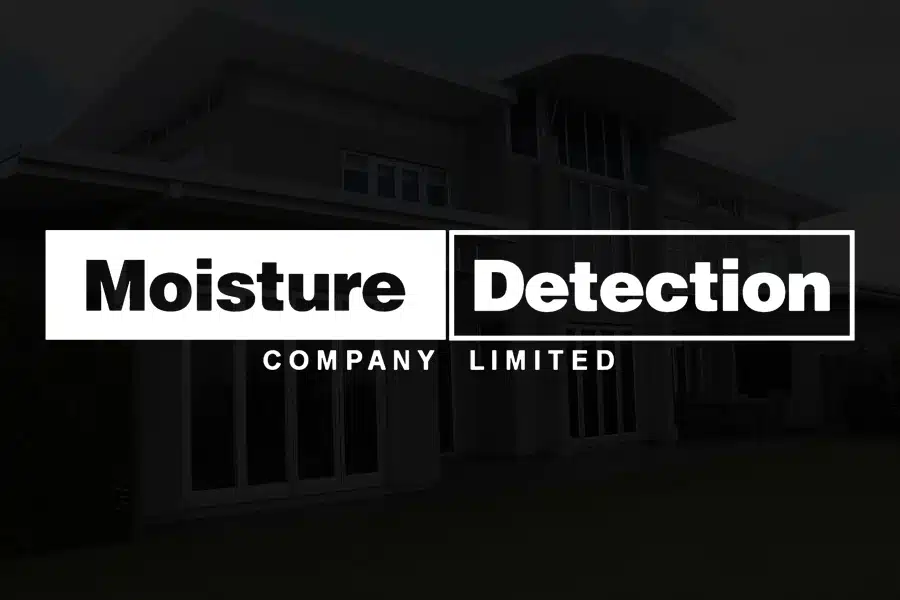Has Anyone Noticed how Few Plaster Houses are Selling?
Are you thinking about selling a plaster house? Monolithic or plaster cladding seems to be even more of a hindrance than ever.
Our pre-purchase building inspectors tell us that they have seen a noticeable shift in the housing market.
Several months ago, they were inspecting several plaster clad houses a week for potential buyers, Now, they haven’t had one for nearly four weeks. That’s a huge change, but what would cause that?
Real estate agents must know this but it’s probably not news-worthy enough to grab the public attention.
To be honest, the signs have been on the wall now for a while.
- More plaster clad houses being sold at rock bottom prices.
- Banks withholding finance unless the house has a clean bill of health.
- More desperate owners contacting us and seeking help to make their houses saleable.
In this post we look at the change in the property market for a plaster house: Owners seem to have given up listing them. The only buyers around are developers looking for development sites, or buyers who can virtually pay cash, or have a very high deposit.
So what’s happened, and how can owners rescue their dreams of selling and moving on?
Plaster House Owners are giving up on their dreams!
Many owners appear to have given up on the dream of selling their homes for anything like what they hoped for. They aren’t willing (or can’t afford) to give them away for next to nothing. So they are sitting tight, putting their future plans on hold. Staying put while hoping for a miracle that will somehow make their house worth more.
We have seen countless examples where owners thought they had a buyer lined up. However, when the pre-purchase inspector found one or more potential moisture issues, the banks refused finance and deal fell through. The real estate agent was then aware of an adverse inspection report. When disclosed to next potential buyers, this drove the next offer down. But even at the lower price, the banks would bail, forcing the new deal to fall through as well.
It’s a vicious spiral that only stops at a price where banks feel comfortable that the loan is 100% safe or when cash buyers step in and offer rock bottom prices. That’s normally somewhere around land value or even less.
The house itself could be worth nothing or less than nothing.
In some cases, the houses truly had serious issues, but many were essentially sound, dry houses requiring some basic maintenance or remedial work. All houses leak, but if it’s a plaster house the banks put the cheque book away.
These lovely family homes, which could cost a million to re-build, valued at virtually nothing on the back of a visual-only inspection report. Plaster houses that would comfortably last another 20, 30 even 40 years with correct maintenance guided by moisture monitoring, written off as likely needing recladding or rebuilding.
Great for the buyer, but tragedy and financial devastation for the vendors.
All this is thanks to major negligence by central government, BRANZ, local government, builders and manufacturers – but that’s another story.
Owners don’t see the signs until it’s too late
The owners were unaware of any problems because their family homes felt dry and comfortable. How can it be a leaker when there is no mould, no damp smell, no rotting carpets…….?
It comes as huge surprise when the buyer’s inspector finds areas which could be leaking, and a massive blow when the banks pull the finance rug out from under the deal.

Maybe word has gotten around, or real estate agents are being straight up with plaster clad homeowners about the market realities. In any case, there don’t seem to be many out there under offer or on the market.
And who could blame an owner? Only those who are being forced to sell, or can afford to sell at rock bottom price would list now. So they stay put, dreams on hold, hoping for a better selling market.
Admit it – you knew this all along
Everyone owning a plaster house knows here could be a problem lurking in the future. When you bought it the price was lower than surrounding houses for good reason.
- You know that these houses are more prone to leaks and decay.
- You know that the house is worth less than a comparable brick or weatherboard house, but you just hope that yours will be OK when the time comes to sell.
- You may have dismissed a few cracks on the cladding or the gib, or some swelling in the skirting boards or window sills splitting. It’s amazing how good we are at rationalising away some visual cues.
Maybe you believed the hype from the painting companies that all you needed to do was paint the house every seven – ten years and all would be good. However, we know that more layers of paint just make it harder for water from leaks to dry out. Paint doesn’t stop the leaks or make the house dry.
A fresh coat of paint just makes a pre-purchase inspector suspicious about what has just been hidden.
Maybe your house shows no visible evidence of water, but you still know that buyers will wonder what’s happening inside the walls.
Whatever your circumstances, you know that you have to face up to the issue sometime.
Gambling with your Future
For plaster house sellers, the odds are stacked against you and chances of winning are low, so how do you even up the odds?
- Take action now to sell for a reasonable price in the future.
- Prepare your house, to give it the absolute best chance of selling.
- Front up with real proof to buyers, inspectors and banks that the house is safe, dry and a good risk.
That proof won’t come quickly, and it may cost some effort and money.
The alternative is hoping that the right person, who loves your house, and doesn’t need bank finance, will appear at the right time, and be happy to pay you the amount you want for your house.
That’s called gambling and it’s not for the faint hearted or for those who need the best price for their house.
How do Plaster House Owners Escape from this Dilemma?
There is no magic wand – sorry – but keep reading.
There are an abundance of companies out there who either want to paint your house or re-clad it, but only one company with the tools and experience to give owners the information needed for sound decisions.
To escape from this dilemma, owners need to take action, but action that is ill-informed is usually action in the wrong direction; meaning wasted time, money, effort and opportunity – none of which most owners can afford.
What action is best for you?
- Do you just sell as is and take the hit?
- Do you just let the house deteriorate, live in it for as long as it is habitable, then sell?
- Do you hold on, keep up with some maintenance, and hope that the market will get better?
- Do you re-clad and hope that the uplift in value exceeds the cost of the re-clad and disruption to your life? Do you know if it even needs a re-clad? What evidence do you have?
- Do you bulldoze the house and start again?
- Do you find out the issues that buyers, pre-purchase inspectors and banks don’t like and remediate them as far as possible before going to market. Stop the vicious downwards price spiral before it starts?
Each of these is a specific decision that has costs and consequences.
Maybe you have one or two obvious leaks making you think that your house is doomed or needs to be re-clad. But what if your house was actually built with well-treated timber, and those are isolated issues that can be easily fixed. Would that change your decisions and actions?
What if your house looks great and feels dry to you but is actually built with untreated timber. What if there are several long-term leaks causing major decay damage to key structural components. Would you want to know that before you wasted $50,000 on repainting?
No-one should make important decisions about their house without sufficient information.
- about the true condition of the house.
- about the timber that was used.
- about the condition of the timber and where the house is actually leaking.
Otherwise it would be like a doctor prescribing very potent and expensive medication without getting any tests done. We’d call that negligence. Should you do this with your house worth hundreds of thousands of dollars?
The first step in escaping the dilemma is gaining enough accurate information to make informed decisions.
Plaster House Owners can make Informed Decisions
Moisture Detection Company provide plaster house owners with tools giving an enormous amount of information on the true condition of their houses.
The Mdu Moisture Probe system unobtrusively tests the condition and moisture content of the internal framing at dozens of potential leak points around the house, providing detailed data.
Timber condition, moisture levels, timber treatment type and strength – all tested and overlaid onto digital plans. Owners have a clear, comprehensive, visual representation of where the house is performing well or not performing. So you know where you need to focus your attention and maintenance budget.

Complete Toolbox of Solutions
A full set of methods is available to upgrade, repair or remediate the main defects or leaks that make it hard for owners to sell their plaster house.
We call this our “Toolbox of Solutions” and can download a summary of these by clicking on the link.
More detail on these is available here
Owners choose which solutions they want to apply, and when, to match their goals, time frame and budget.
The moisture probes stay in the house and are be checked regularly to make sure that repairs have been, and stay successful.
Owners are alerted to any new leaks so they can be repaired before they cause significant damage.
Moisture Probes Help to Sell a Plaster House
The goal should be to sell your house for fair value – what it is really worth.
A key issue with selling a plaster house is uncertainty, and the risk that goes with that.
When an inspector finds an area of the house that scans high for moisture, what does that mean for the buyer and the bank?
Does the house need to be re-clad, have extensive repairs, or just some sealant replaced? Buyers and banks assume the worst and you know what happens then. Any hope of achieving a fair value sales price is gone.
Moisture probes find out the problems so you can either repair them or declare them to potential buyers.
Moisture probes provide an accurate, repeatable and independently verifiable measurement of the true moisture levels. These are often very different to what a ‘visual only’ inspection will find.
Buyers, inspectors and banks can rely on the results of the probes without having to assume the worst case.
The buyers knows that the house is fitted with moisture probes and has a maintenance plan to keep it dry into the future. This reduces their risk considerably.
A fair price is negotiated based on real data.
Conclusion
In conclusion, it appears that the problems in selling a plaster house are getting worse. More owners are choosing to stay put to avoid selling at a extra-low price. But just staying put and doing nothing is gambling that something external will change.
Proactive owners find out what will stop their house from selling, and address those issues, before going to market.
The Moisture Probe System is unique. It is the only tool available to owners which can non destructively diagnose moisture and decay issues.
Applying the ‘Toolbox of Solutions’ resolves the leaks and eliminates high risk features. Pre-purchase inspections are more positive.
With the house proven to be drier and lower risk, the house itself has value. It is maintained with normal maintenance, guided by ongoing readings from the moisture monitoring system.
Plaster house owners list and sell their houses for a fair price when they plan ahead and take action early.
Contact Moisture Detection Company on (09) 271 0522, or email us at info@moisturedetection.co.nz.

